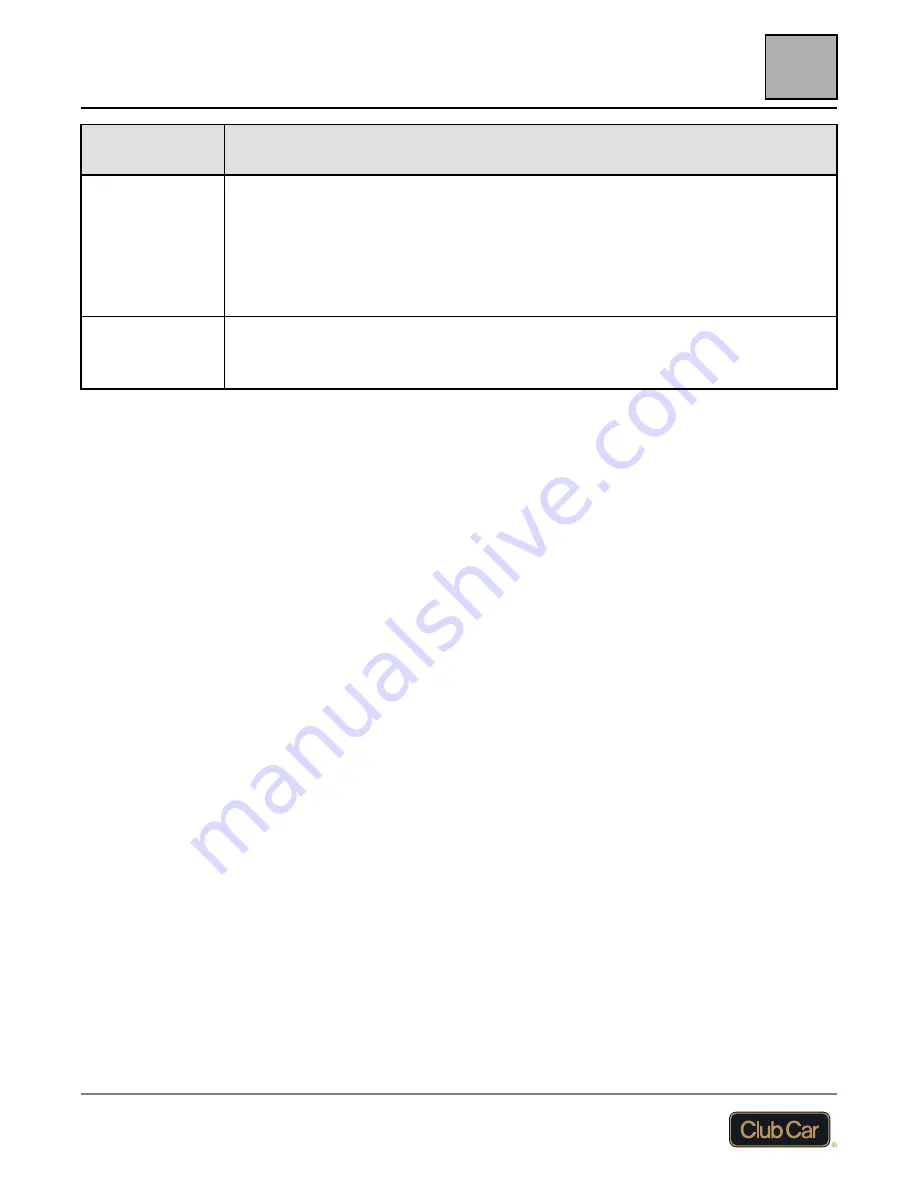
VILLAGER 2+2 LSV ELECTRIC
Operators Manual
TPCC01VS00EN017 (Edition A)
Page 49
INSPECTION
AREA
INSPECTION CRITERIA
Battery Charger
• Examine the electrical cords for cracks, loose connections, and frayed
wires.
• Examine receptacle contacts and plug terminals. Clean as necessary.
• Replace missing, worn, or damaged items.
• Make sure that the battery charger operates correctly.
Vehicle
Performance
Inspection
• Do a vehicle performance inspection.
VEHICLE PERFORMANCE INSPECTION
Before the vehicle performance inspection:
• Read and obey all safety decals and information located on the vehicle.
• Understand how to operate the vehicle correctly and safely.
• Understand the function of all vehicle controls, indicators, displays, and gauges.
• Front wheels are turned in the direction of travel.
• No obstructions are in the vehicle’s path.
During the vehicle performance inspection:
• Listen for unusual noises such as squeaks or rattles.
• Examine the ride and performance of the vehicle.
• Examine the steering. The vehicle must be easy to steer and must not have play in the steering
wheel.
• The vehicle must stop smooth and straight. The brake pedal must not be able to be pushed to
the floorboard. Have a trained technician do a brake system check if:
– The vehicle swerves.
– The brake pedal goes more than half the distance to the floorboard with moderate
pressure applied.
– The vehicle does not stop.
To do the vehicle performance inspection:
1.
Turn the key to ON.
2.
Push and hold the brake pedal.
3.
Set the Forward / Neutral / Reverse control (FNR) to R. Make sure that the multi-purpose buzzer
operates.
4.
Release the brake pedal.
5.
Slowly push the accelerator pedal. Make sure the vehicle moves in reverse.
6.
Slowly push the brake pedal. Stop the vehicle.































